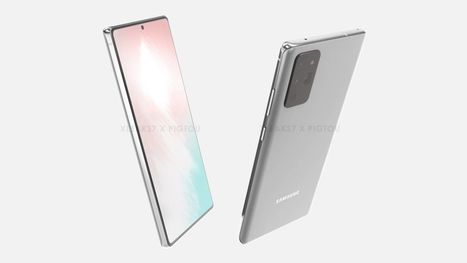Samsung is working on HOP display tech that's set to boost the battety life of the Galaxy Note 20.
Research and publish the best content.
Get Started for FREE
Sign up with Facebook Sign up with X
I don't have a Facebook or a X account
Already have an account: Login
 Your new post is loading... Your new post is loading...
 Your new post is loading... Your new post is loading...
|
|












Samsung is reportedly working on a new form of OLED screen technology for its Galaxy Note 20 phones that could reduce their power consumption by 20%. The new display tech has been dubbed HOP, which stands for Hybrid-oxide and Polycrystalline silicon, reported The Elec. And it’s a combination of existing, if not widespread screen tech, merging low-temperature Polycrystalline oxide (LTPO) and Polycrystalline silicon (LTPS). LTPO screens have already been used in the likes of the Apple Watch Series 5 in order to extract as much battery life out of the smartwatch as possible. But they’ve yet to make it over to mainstream smartphones. However, leaks around the display on the Galaxy Note 20 phones, specifically the Galaxy Note 20 Ultra, suggest that they will spearhead the addition of LTPO screens. Now, this latest report indicates that Samsung is building new screen tech using LTPO as a foundation, which could suggest that both Note 20 phones will get a next-generation OLED display as a means for Samsung to show off is screen prowess. With HOP displays and LTPO tech, the refresh rate of the scenes can change on the fly rather than need to be manually changed in a phone’s settings. For example, if you're watching a movie on your phones that won’t benefit from a high refresh-rate, the panel can automatically drop down from 120Hz to 60Hz. Doing this would help save on battery life, something that phones with high refresh-rate displays can struggle with. The Galaxy S20 Ultra, for example, can only use its 120Hz refresh rate when it’s resolution is set at FHD+ rather than the full 1440p resolution; this is done to ensure the phone doesn’t chew through battery life. Phones like the OnePlus 8 Pro and Oppo Find X2 Pro can use their maximum resolution at 120Hz and adjust the refresh rate dynamically. But they use extra hardware to achieve this, whereas the Galaxy S20 phones rely on software and require a user to manually set the refresh rate. The higher-end iPhone 12 Pro models are also expected to sport 120Hz displays with variable refresh rates, so this upgrade would allow the Note 20 to keep up with its biggest competitor without sacrificing much battery life.